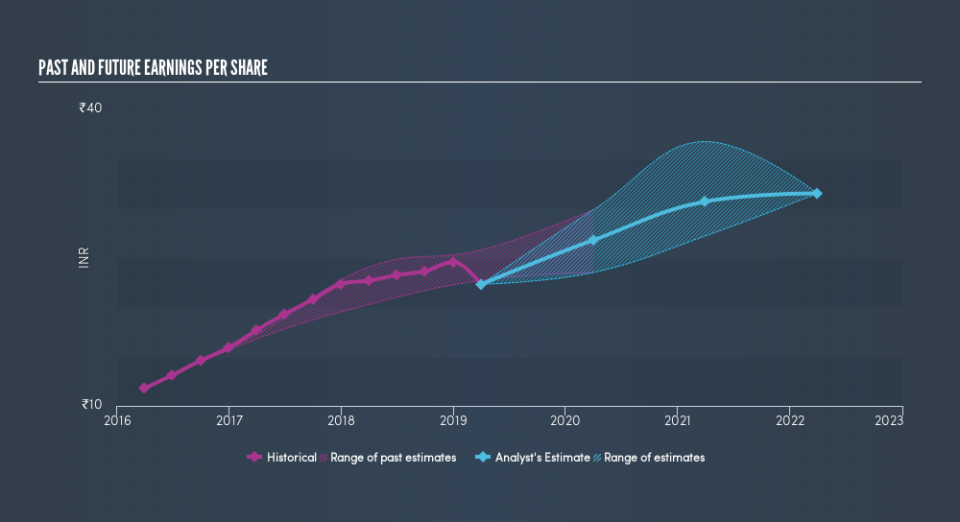Did The Underlying Business Drive Can Fin Homes's (NSE:CANFINHOME) Lovely 478% Share Price Gain?

Want to participate in a short research study? Help shape the future of investing tools and you could win a $250 gift card!
Can Fin Homes Limited (NSE:CANFINHOME) shareholders have seen the share price descend 11% over the month. But over five years returns have been remarkably great. In that time, the share price has soared some 478% higher! So it might be that some shareholders are taking profits after good performance. But the real question is whether the business fundamentals can improve over the long term.
See our latest analysis for Can Fin Homes
While the efficient markets hypothesis continues to be taught by some, it has been proven that markets are over-reactive dynamic systems, and investors are not always rational. By comparing earnings per share (EPS) and share price changes over time, we can get a feel for how investor attitudes to a company have morphed over time.
During five years of share price growth, Can Fin Homes achieved compound earnings per share (EPS) growth of 25% per year. This EPS growth is lower than the 42% average annual increase in the share price. This suggests that market participants hold the company in higher regard, these days. And that's hardly shocking given the track record of growth.
You can see how EPS has changed over time in the image below (click on the chart to see the exact values).
It's probably worth noting that the CEO is paid less than the median at similar sized companies. But while CEO remuneration is always worth checking, the really important question is whether the company can grow earnings going forward. Dive deeper into the earnings by checking this interactive graph of Can Fin Homes's earnings, revenue and cash flow.
What About Dividends?
As well as measuring the share price return, investors should also consider the total shareholder return (TSR). Whereas the share price return only reflects the change in the share price, the TSR includes the value of dividends (assuming they were reinvested) and the benefit of any discounted capital raising or spin-off. It's fair to say that the TSR gives a more complete picture for stocks that pay a dividend. As it happens, Can Fin Homes's TSR for the last 5 years was 556%, which exceeds the share price return mentioned earlier. The dividends paid by the company have thusly boosted the total shareholder return.
A Different Perspective
We regret to report that Can Fin Homes shareholders are down 17% for the year (even including dividends). Unfortunately, that's worse than the broader market decline of 4.5%. Having said that, it's inevitable that some stocks will be oversold in a falling market. The key is to keep your eyes on the fundamental developments. On the bright side, long term shareholders have made money, with a gain of 46% per year over half a decade. It could be that the recent sell-off is an opportunity, so it may be worth checking the fundamental data for signs of a long term growth trend. Is Can Fin Homes cheap compared to other companies? These 3 valuation measures might help you decide.
We will like Can Fin Homes better if we see some big insider buys. While we wait, check out this free list of growing companies with considerable, recent, insider buying.
Please note, the market returns quoted in this article reflect the market weighted average returns of stocks that currently trade on IN exchanges.
We aim to bring you long-term focused research analysis driven by fundamental data. Note that our analysis may not factor in the latest price-sensitive company announcements or qualitative material.
If you spot an error that warrants correction, please contact the editor at editorial-team@simplywallst.com. This article by Simply Wall St is general in nature. It does not constitute a recommendation to buy or sell any stock, and does not take account of your objectives, or your financial situation. Simply Wall St has no position in the stocks mentioned. Thank you for reading.


